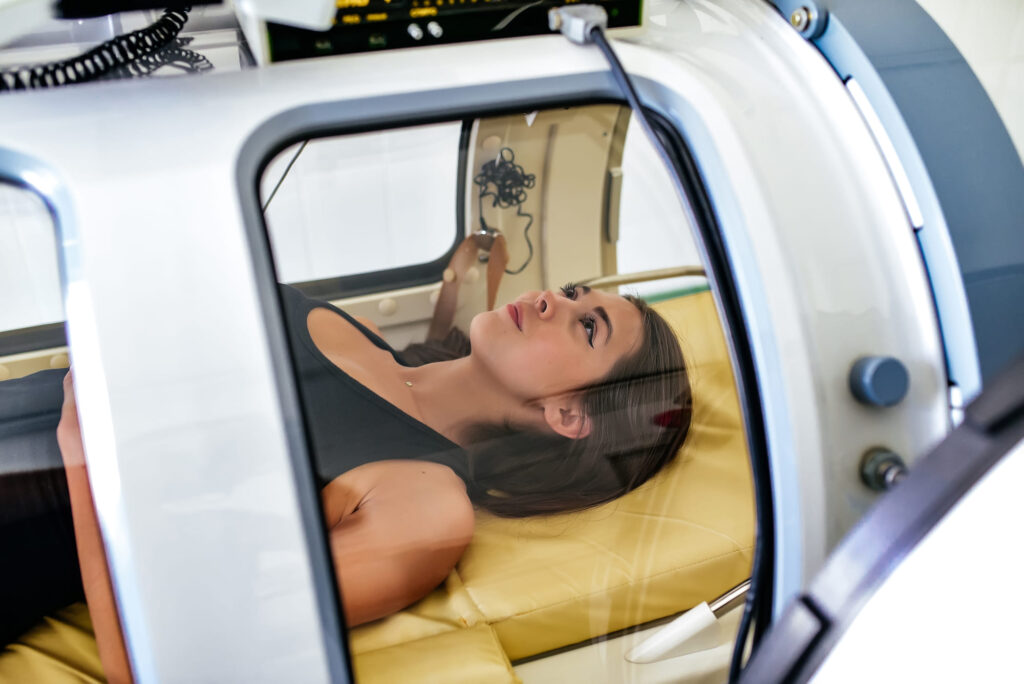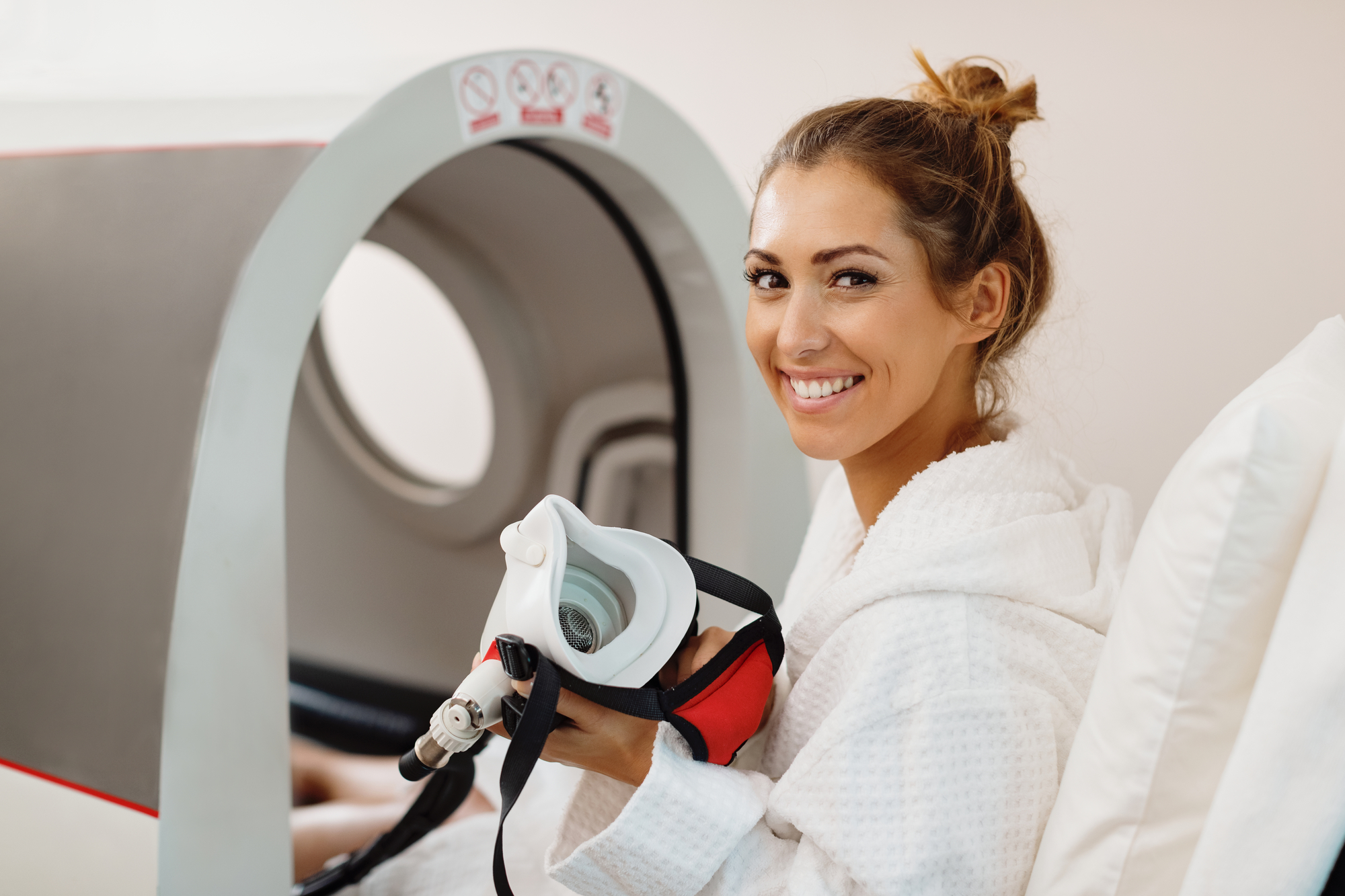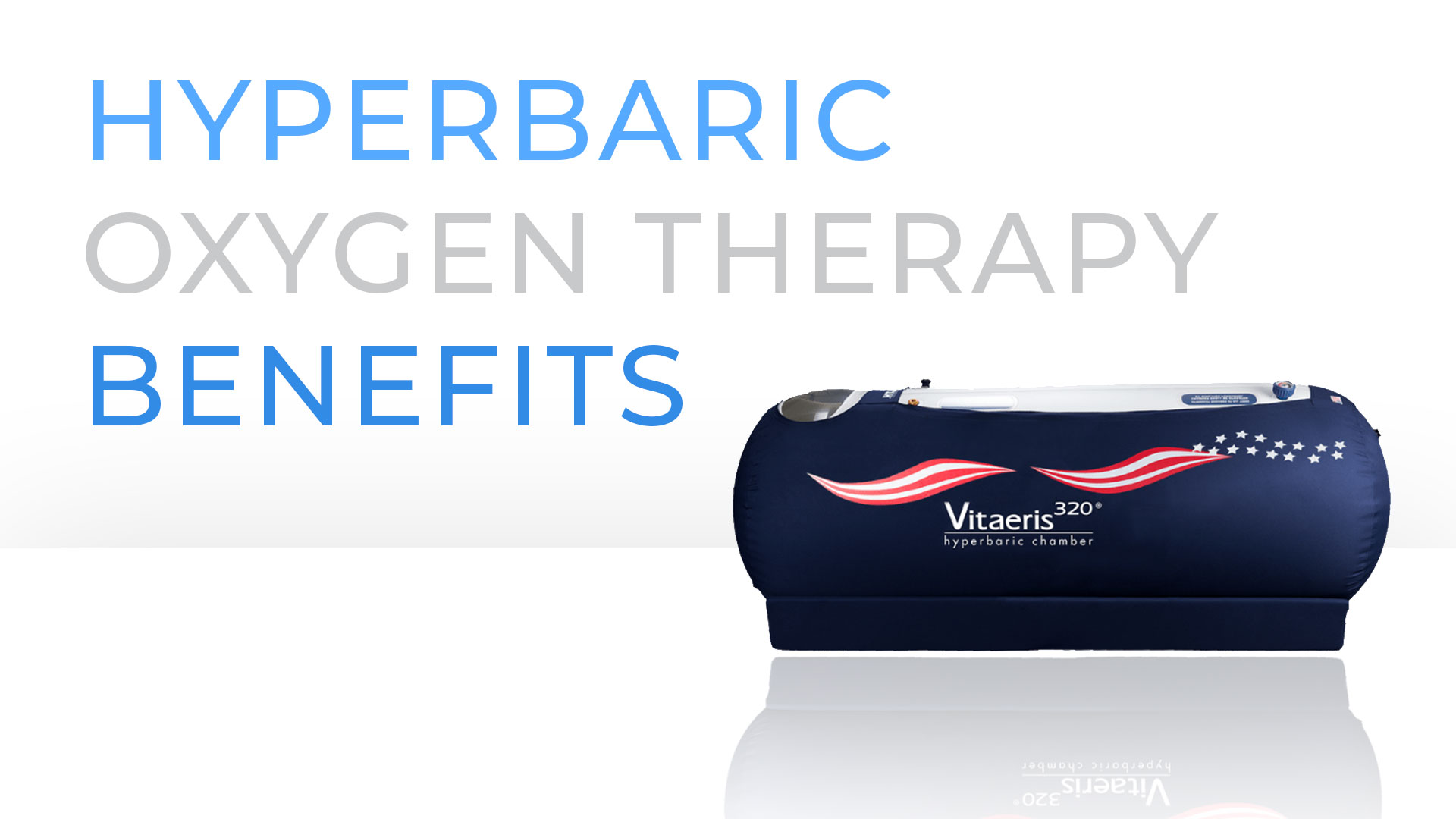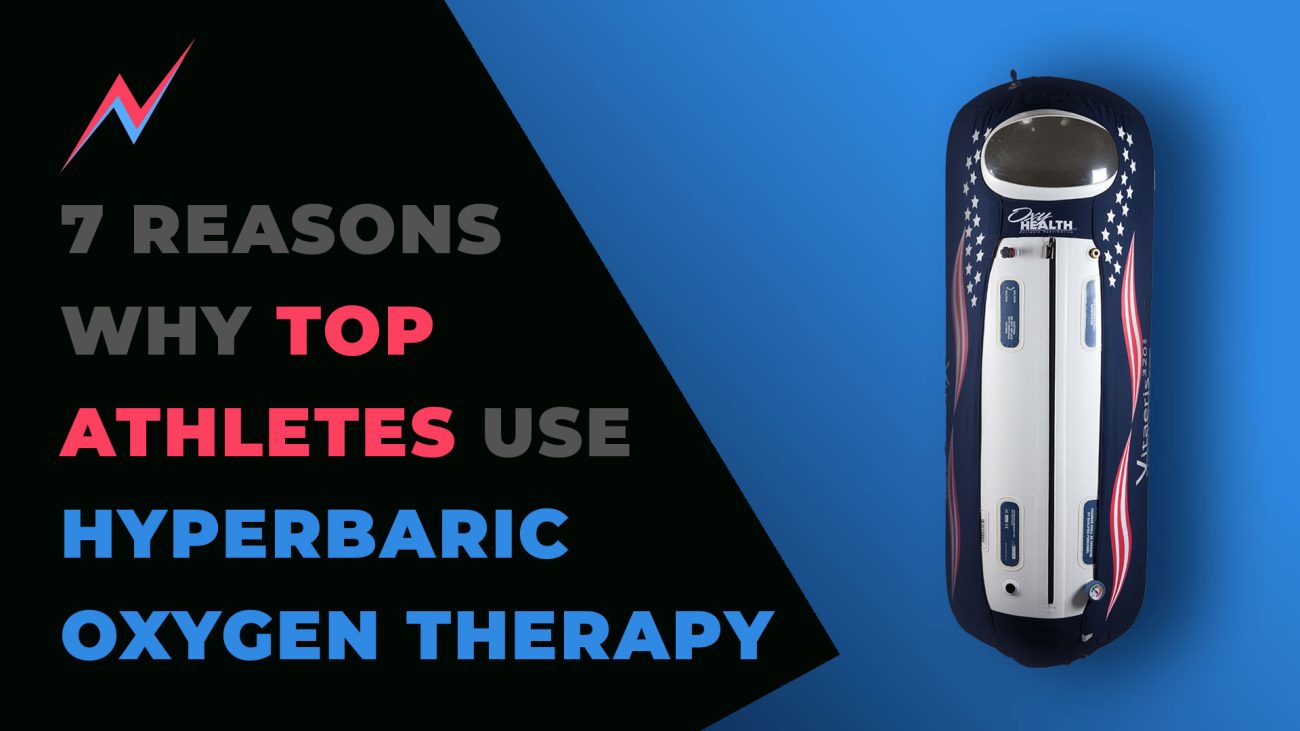
Athletes are always looking for ways to improve their performance and recovery time, either with remedies, training, equipment, or new therapies that promise much but sometimes can be left with little actual results.
However, one proven and studied method that has gained popularity in recent years is hyperbaric oxygen therapy, which has more than a promise: It's shown results. This innovative treatment involves breathing in pure oxygen in a pressurized chamber, which can have a range of benefits for athletes.
From speeding up muscle recovery to increasing stamina, hyperbaric oxygen therapy has the potential to enhance athletic performance in a significant way. Take some time to see if hyperbaric oxygen therapy is right for you.
Explore the various benefits of hyperbaric oxygen therapy for athletes and how it can help take their training to the next level.
Defining Hyperbaric Oxygen Therapy and Its Uses
For decades, hyperbaric oxygen therapy (HBOT) and hyperbaric chambers have been utilized to treat various medical conditions, such as decompression sickness in scuba divers, soft tissue healing, severe anemia (deficiency of red blood cells), radiation injuries, and more.
The fundamental way this treatment works is by inhaling pure oxygen in a pressurized room or large tube to boost the body's natural healing mechanisms. It is a safe, FDA-approved technology that essentially involves breathing in higher-than-normal levels of oxygen at increased pressures.
The Hyperbaric Chamber: Key to HBOT
A hyperbaric chamber is a sealed enclosure where individuals inhale pure, 100% oxygen at elevated pressures exceeding normal atmospheric pressure levels. This enables the lungs to absorb a higher concentration of oxygen compared to the air at sea level.
According to the Undersea and Hyperbaric Medical Society (UHMS), Hyperbaric Oxygen Therapy (HBOT) involves increasing oxygen delivery to a patient breathing only this gas at pressures of 1.4 ATA (equivalent to normal ambient pressure at sea level) or above.
Hyperbaric oxygen chambers vary in size and design, with the two most common types being monoplace chambers and multiplace chambers, designed for single or multiple individuals, respectively.
Research has shown that, at least for athletes, multiplace chambers are the better option, as they allow for oxygen fluctuation during each session, which has been shown to induce more stem cell production and hypoxia-inducible factor, key in the creation of new blood vessels.
Meanwhile, hyperbaric oxygen therapy involves a patient breathing a pure oxygen supply in a hyperbaric chamber, allowing the lungs to gather more oxygen than normal for several sessions. This increased oxygen level in your blood has a range of potential benefits, like promoting wound and injury healing and even helping fight certain infections.
New research, like this 2022 study, has found more potential benefits from hyperbaric oxygen therapy, such as boosting energy levels, improving athletic performance, or enhancing overall well-being.
Here are just some of the known effects of hyperbaric oxygen therapy on the body include:
- Increased blood oxygen level to tissues.
- Increases energy at the cellular level.
- Stimulates new blood vessel growth.
- Decreases the size of blood oxygen molecules, improving its distribution.
- Stimulates stem cell growth, helping osteogenesis (bone growth) and angiogenesis (blood vessel growth.)
- Increases infection and injury recovery, including recovery from carbon monoxide poisoning or decompression sickness.
- Enhanced immune response.
Understanding the uses and effects of hyperbaric oxygen therapy can empower you or any patient to make informed decisions about incorporating this treatment into your healthcare routine.
The Top 7 Hyperbaric Oxygen Therapy (HBOT) Benefits for Athletes
Is there really evidence to prove athletes benefit from hyperbaric oxygen treatment? You bet.
HBOT has been studied extensively throughout the last three decades, with one 2011 meta-analysis done in Portugal of several global studies and clinical trials on professional athletes since the 1990s showing very promising results from HBOT for treating muscle-tendon junctions and ligament injuries, strains, and ischemia.
Another study has proven just how much it improved mitochondrial respiration and physical performance in middle-aged athletes, giving them an overall energy boost after consistent and effective sessions in a hyperbaric chamber.
These proven and beneficial effects are why some of the most famous athletes in the world, including LeBron James, Michael Phelps, and Tiger Woods, have used them for both healing and obtaining a competitive edge.
1. Reduction of Inflammation
One of the most positive effects of hyperbaric oxygen therapy on athletes has been its reduction of inflammation. The science behind this starts with cytokines, which are small proteins crucial for the body's immune response. They regulate inflammation and the body's reaction to infection, injury, or stress.
However, prolonged elevated cytokine levels can lead to tissue and organ damage due to an overactive immune response. Athletes who regularly engage in intense physical activity may experience chronic cytokine elevation, a persistent state of inflammation caused by stress and damage to muscles and tissues during training and competition. This condition can result in reduced muscle function, increased injury risk, and impaired recovery, as well as potential health issues like insulin resistance, cardiovascular disease, and chronic pain.
It's why researchers, for years now, have been studying how HBOT has shown promise in reducing inflammation and promoting tissue regeneration. Studies have demonstrated HBOT's ability to reduce inflammation and enhance muscle recovery in injuries, as well as alleviate pain and improve function in chronic musculoskeletal conditions.
Another study from 2017 found that HBOT could indeed reduce inflammation while also improving muscle regeneration in animals with induced injuries.
2. Increased Physical Performance
Because hyperbaric oxygen treatment decreases the size of blood oxygen molecules, they can more easily reach cellular mitochondria, which is where ATP is produced. ATP can be best described as cellular or mitochondrial respiration and is essential for the body's energy levels, meaning that the increase in oxygen concentration can lead to more energy for work and recovery, as well as an increase in physical performance.
HBOT was shown in a study to also increase aerobic capacity and endurance performance in healthy middle-age master athletes, meaning that they were able to improve their maximal oxygen consumption, or VO2max, which is the level of oxygen you can consume when being physically active.
In addition, it has also been shown to improve the anaerobic threshold or VO2AT, meaning athletes can last longer before their muscles and energy run out during exercise.
Another study involving young soccer players found that, just like with middle-aged athletes, the effects of hyperbaric oxygen therapy were just as promising, improving peak performance in noticeable ways.

3. Improved Recovery from Injuries
HBOT involves breathing pure oxygen in a pressurized chamber, which increases the amount of oxygen in the blood. This higher oxygen level can improve circulation and blood flow and promote the delivery of oxygen to muscle tissues, aiding in their recovery time.
Previous studies have also shown how HBOT can help quicken the natural healing processes and functional recovery from injuries and recovery from fatigue in athletes. One study from Japan followed several athletes who were treated with oxygen therapy, and they all reported a reduction in post-injury swelling.
The best results were shown in bone, muscle, and ligament sports injuries, although there was still a generalized recovery in tissues around the body, not just ligament or muscle tissue.
Higher blood oxygen levels also increase the capacity of white blood cells in our immune system to kill bacteria, thanks to an increase in neutrophil and macrophage activity, adding another layer to the overall recovery effects of hyperbaric oxygen therapy.
4. Helps Decrease Muscle Fatigue and Soreness
Because HBOT also helps to increase maximal oxygen consumption and the anaerobic threshold, muscle soreness is reduced, and recovery from exercise is accelerated. With its anti-inflammatory effects, it also helps recovery times after exercise or intense physical strain. The influx of oxygen into the cells promotes blood vessel growth and, thus, better and faster muscle recovery after intense workout sessions, leading to better athletic output.
5. Improved Cognitive Function and Mental Clarity
Even cognitive function improved in several trials about the effects of HBOT, with another study showing an almost 4% increase on average.
There's a marked improvement in focus, attention, information processing speed, and overall cognitive performance. This is because improved oxygenation does not just lead to blood vessel growth and benefits for soft tissue injuries but also for the nervous system and brain tissue.
This means that it can also aid brain recovery after concussions or traumatic brain injury, which is why HBOT has become a mainstay in sports like American football or NASCAR. Some of the biggest names in the NFL, from Aaron Rodgers to Joe Namath have talked about using hyperbaric oxygen protocols to reduce complications from head trauma or other injuries. That's not all, elite athletes across other sports like Lebron James, Joe Namath, and Michael Phelps also swear by the benefits of HBOT as well.
6. Better Sleep
Last but not least, among the many benefits of hyperbaric oxygen therapy for athletes is improving sleep. HBOT has been shown to improve the quality of sleep in individuals, including athletes. The increased oxygen levels provided during HBOT sessions can have several benefits on sleep quality in several ways.
Since inflammation can be reduced after a session in a hyperbaric oxygen therapy chamber, that leads to a faster recovery and healing after muscle fatigue and inflammation, which then results in improved sleep quality at night.
HBOT also helps reduce stress and anxiety, as it helps the nervous system as well, healing the brain and improving cognitive function, which in turn leads to much better sleep at night.
In fact, it's even been shown to improve the symptoms of long COVID, including chronic insomnia.
7. Faster Recovery Times
Just like HBOT can improve recovery from injuries and reduce swelling, then another expected benefit is an overall improvement in recovery from fatigue in athletes. The time it takes to be ready for their next run, fight, game, or workout is shortened.
This is a result of the increased atmospheric pressure with 100% oxygen, which allows the essential molecule to dissolve in the blood plasma itself, meaning more tissues can get more oxygen. This increases the recovery process and healing process after injury or intense workout. Again, improving sports performance is established at the top of the list.
Give HBOT a Chance to Help Healing, Sleep, Physical Performance and Recovery
Talk to your healthcare provider to see if hyperbaric oxygen therapy can help you as an athlete heal from any previous sports injury, improve cognitive performance after a past injury, or just keep your performance levels competitive and at the top of your potential. Don't hesitate to call or contact ReEnergized to book a session that's completely safe and where you're in control of your treatment at all times.
Hyperbaric Oxygen Therapy Risks
The risks associated with hyperbaric oxygen therapy are generally considered to be rare when the treatment is administered appropriately by qualified, informed professionals. These include potential claustrophobia while laying in the chamber, anxiety, lightheadedness, fatigue, ear or sinus pressure or discomfort, and in cases where the recipient was in the chamber for too long, there have been cases of oxygen poisoning. HBOT is not recommended for pregnant women or individuals with middle ear barotrauma, uncontrolled high blood pressure, or acute or chronic respiratory conditions.
References
1. Hyperbaric oxygen and wound healing
2. Hyperbaric oxygen therapy: Antimicrobial mechanisms and clinical application for infections
3. Treatment of burns with hyperbaric oxygen (Article)
4. Effect of hyperbaric oxygen therapy on patients with herpes zoster
5. Hyperbaric oxygen therapy for traumatic brain injury: bench-to-bedside
8. Safety Precautions for HBOT at Home: What You Need to Know

What is Hyperbaric Oxygen Therapy?
Hyperbaric oxygen therapy, also known as HBOT, is a wellness therapy in which a person breathes pure oxygen in a pressurized chamber. This therapy is typically administered in a hyperbaric chamber, which can be a monoplace chamber designed for a single person or a multiplace chamber that can accommodate multiple individuals. The chamber is pressurized to levels higher than atmospheric pressure, usually around 2 to 3 times normal atmospheric pressure. The primary mechanism of action of HBOT is to increase the amount of oxygen dissolved in the bloodstream, which can promote various therapeutic effects.
Sessions usually last between 30 minutes and 2 hours, and frequency can vary depending on the specific concern being treated and the recommendations of the recipient's wellness advisor(s). In many cases, a standard course of treatment involves daily sessions, typically five days a week. The suggested total number of sessions can range from just a few to several weeks' worth, depending on the nature and severity of the issue the recipient seeks to address.
Hyperbaric Oxygen Therapy Benefits
- Increases Blood Oxygen Levels
- Stimulates Growth Factors and Stem Cells
- Improves White Blood Cell Activity
- Decreases the Size of Blood Oxygen Molecules and Increases Circulation
- Increases ATP Energy Molecule Production
- Stimulates Blood Vessel Synthesis and Proliferation
Hyperbaric Oxygen Therapy Applications
Wound Healing
Hyperbaric oxygen therapy can promote the healing of certain wounds, such as diabetic foot ulcers, non-healing surgical wounds, wounds resulting from traumatic injuries, and burns. In conditions like trauma-induced crush injuries, this works by increasing the amount of dissolved oxygen in the bloodstream through higher pressure. It also reduces bubble size and promotes various healing processes, including vasoconstriction to manage tissue swelling, collagen synthesis for wound healing, and angiogenesis for new blood vessel formation. Simultaneously, HBOT enhances the body's defense against bacteria by increasing oxygen free radicals and improving the effectiveness of certain antibiotics.1 Wound healing is common reason people receive HBOT in wellness studio settings such as ReEnergized, and is also widely recognized and implicated in emergency medical settings.
Fighting Infections
Hyperbaric oxygen therapy can also help fight bacterial and fungal infections, including more severe and treatment-resistant infections such as those resulting from diabetic wounds, surgical complications, and radiation-related complications. HBOT is particularly valuable when faced with any of the growing list of antibiotic-resistant pathogens, for those allergic or intolerant of antibiotics, and for anyone avoiding the overuse of antibiotics as a means of optimizing their natural immunity. Specifically, HBOT fights infection by slowing down or killing bacteria and boosting the immune system's natural ability to fight infections. Additionally, it works well alongside other infection-fighting treatments as a complimentary approach.2
Radiation Injury
Cancer patients often undergo hyperbaric oxygen therapy to reduce the side effects of radiation treatment on healthy tissues. These include thermal burns and the potentially-fatal sepsis infection than can result from them. HBOT has an extensive history of success in treating burns– in fact, scientists have known of its ability to reduce burn healing times and mortality rates for over half a century.3 While HBOT is known to treat infections like sepsis by fighting bacteria and boosting immunity, it treats burns by increasing the O2 levels in burned tissues.3
Treating Herpes Family Viruses
Common viruses in the herpes family include herpes varicella-zoster (chickenpox), herpes zoster (shingles), herpes simplex types I and II, and herpes meningitis. Like many viruses, they are anaerobic, meaning they thrive in environments without oxygen. By increasing bodily oxygen content and circulation, hyperbaric oxygen therapy has been shown to drastically accelerate herpes blister and lesion healing, relieve associated pain, and reduce the prevalence of certain symptoms associated with some herpes strains, such as neuralgia and depression.4
Treating Traumatic Brain Injury
Hyperbaric oxygen therapy has been demonstrated in numerous studies to have neuroprotective properties when administered to sufferers of traumatic brain injuries (TBI). It does this by improving preventing cell death, reducing inflammation, improving tissue oxygenation and cellular metabolism, and promoting the formation of new neurons and blood vessels in the brain.5
Treatment of Decompression Sickness and Carbon Monoxide Poisoning
One traditional application of hyperbaric oxygen therapy is to treat decompression sickness, also known as nitrogen gas embolism or 'the bends.' Decompression sickness is most commonly caused by ascending too rapidly after scuba diving, which leads to nitrogen gas bubble to formation within the affected person's blood vessels. Left untreated, decompression sickness can lead to severe side effects such as tissue damage, stroke, or heart attack, and can even be fatal.6 The pressurized environment in the hyperbaric chamber allows the increased atmospheric pressure to force more oxygen into the bloodstream, which helps to shrink, dissolve and eliminate the gas bubbles there. Simultaneously, the increased oxygen availability helps to support tissues that may be experiencing oxygen deprivation due to the blockage caused by gas embolisms. These are the same mechanisms by which HBOT speeds the removal of the noxious gas carbon monoxide from the bloodstream.
Treatment of Vascular Air Embolism
In contrast to decompression sickness, vascular air embolism (or VAE) occurs when the bubbles formed in the affected person's arteries are made up of air, as opposed to nitrogen. This usually occurs as a side effect of some routine medical procedures, such as the administration of fluids intravenously.7 The mechanisms by which HBOT treats gas embolisms and vascular air embolisms are generally similar. Both conditions involve the presence of gas bubbles in the bloodstream, which can obstruct blood vessels and lead to tissue damage. For both types of embolisms as well as carbon monoxide poisoning, HBOT should be administered in a timely manner for the best chance at preventing severe consequences, and treatment should not be completed before first receiving professional guidance from the recipient's emergency healthcare team.6, 7
Types of Hyperbaric Oxygen Therapy
If you're interested in hyperbaric oxygen therapy, you're probably wondering how someone receives this treatment. HBOT is usually administered in one of three different types of settings:
- Wellness Studios: Many wellness studios and holistic health practitioners offer hyperbaric oxygen treatments on their menus. Common reasons people seek treatment from these independent health centers include their desire to treat various infections, facilitate wound or injury healing, facilitate collagen formation, and to treat the symptoms of herpes viruses. You can search online or call nearby locations to see if they offer hyperbaric oxygen therapy and ask about pricing and availability.
- Clinical Medical Providers: Some hospitals, medical offices and clinics also offer HBOT as a treatment for certain conditions, such as non-healing wounds, severe infections resistant to conventional treatment methods, noxious gas poisoning, vascular gas embolism or decompression sickness, traumatic brain injuries, and gangrene. In this case treatment is either administered in an emergency setting, or the patient receives a referral from their primary care doctor to see a specialist.
- At-Home Devices: Of course, there are some who prefer the convenience of receiving chamber therapies at home, and have the necessary space and funds to invest in their own machine. While this option can be attractive, be forewarned– if inadequate training or insufficient focus lead to improper use, the consequences can be serious.8 Additionally, these at-home devices are usually inflatable rather than solid fixtures, and are typically smaller and less powerful than the ones used in professional settings. However they can still be effective for certain conditions.
Hyperbaric Oxygen Therapy Risks
The risks associated with hyperbaric oxygen therapy are generally considered to be rare when the treatment is administered appropriately by qualified, informed professionals. These include potential claustrophobia while laying in the chamber, anxiety, lightheadedness, fatigue, ear or sinus pressure or discomfort, and in cases where the recipient was in the chamber for too long, there have been cases of oxygen poisoning. HBOT is not recommended for pregnant women or individuals with middle ear barotrauma, uncontrolled high blood pressure, or acute or chronic respiratory conditions.
References
1. Hyperbaric oxygen and wound healing
2. Hyperbaric oxygen therapy: Antimicrobial mechanisms and clinical application for infections
3. Treatment of burns with hyperbaric oxygen (Article)
4. Effect of hyperbaric oxygen therapy on patients with herpes zoster
5. Hyperbaric oxygen therapy for traumatic brain injury: bench-to-bedside
8. Safety Precautions for HBOT at Home: What You Need to Know
Get In Contact
Call
Location
4434 E Pacific Coast Highway
Long Beach, California 90804
Hours
Monday - Friday
11:00AM - 07:00PM
Saturday - Sunday
11:00AM - 04:00PM
Get In Contact
Call
Location
4434 E Pacific Coast Highway
Long Beach, California 90804
Hours
Monday - Friday
11:00AM - 07:00PM
Saturday - Sunday
11:00AM - 04:00PM

